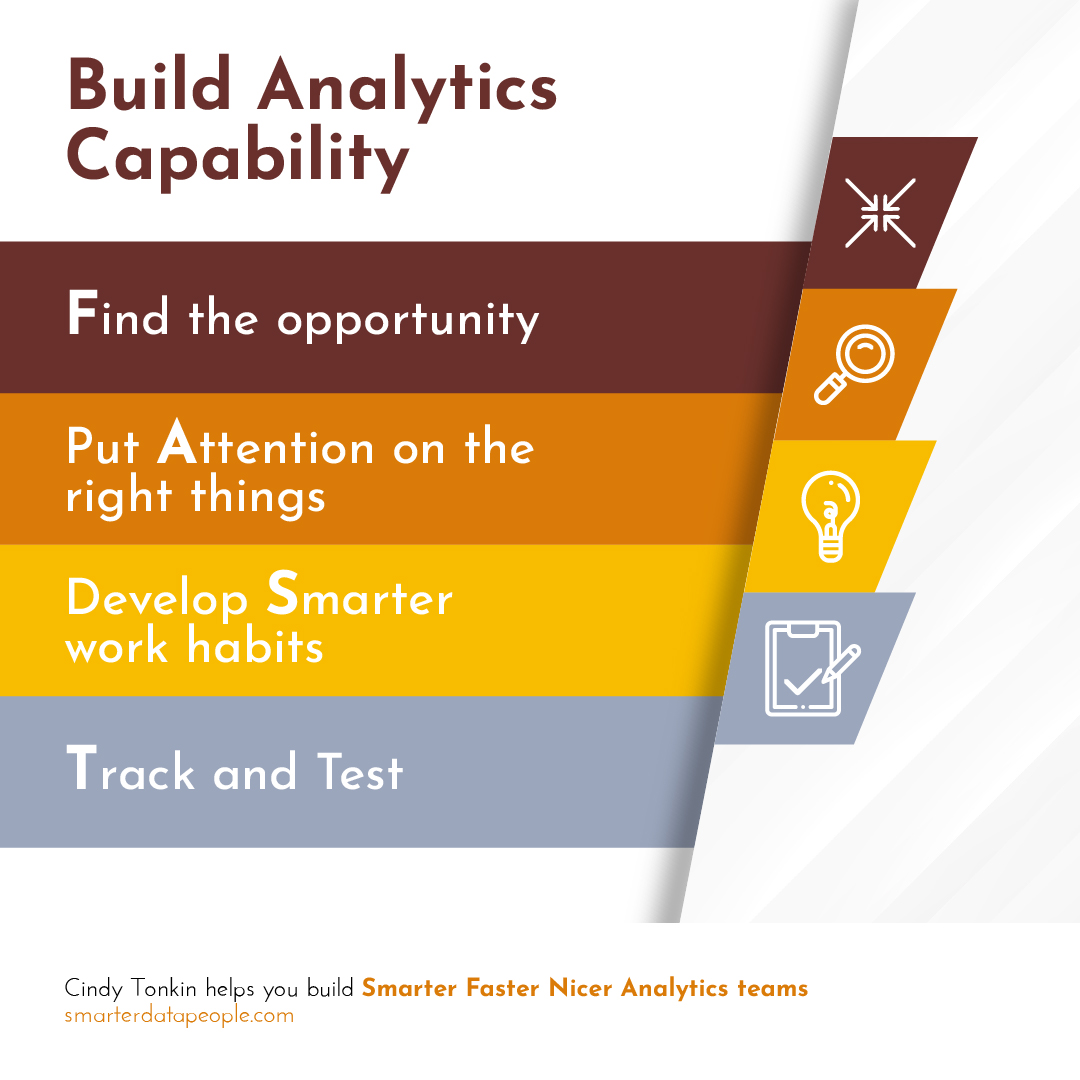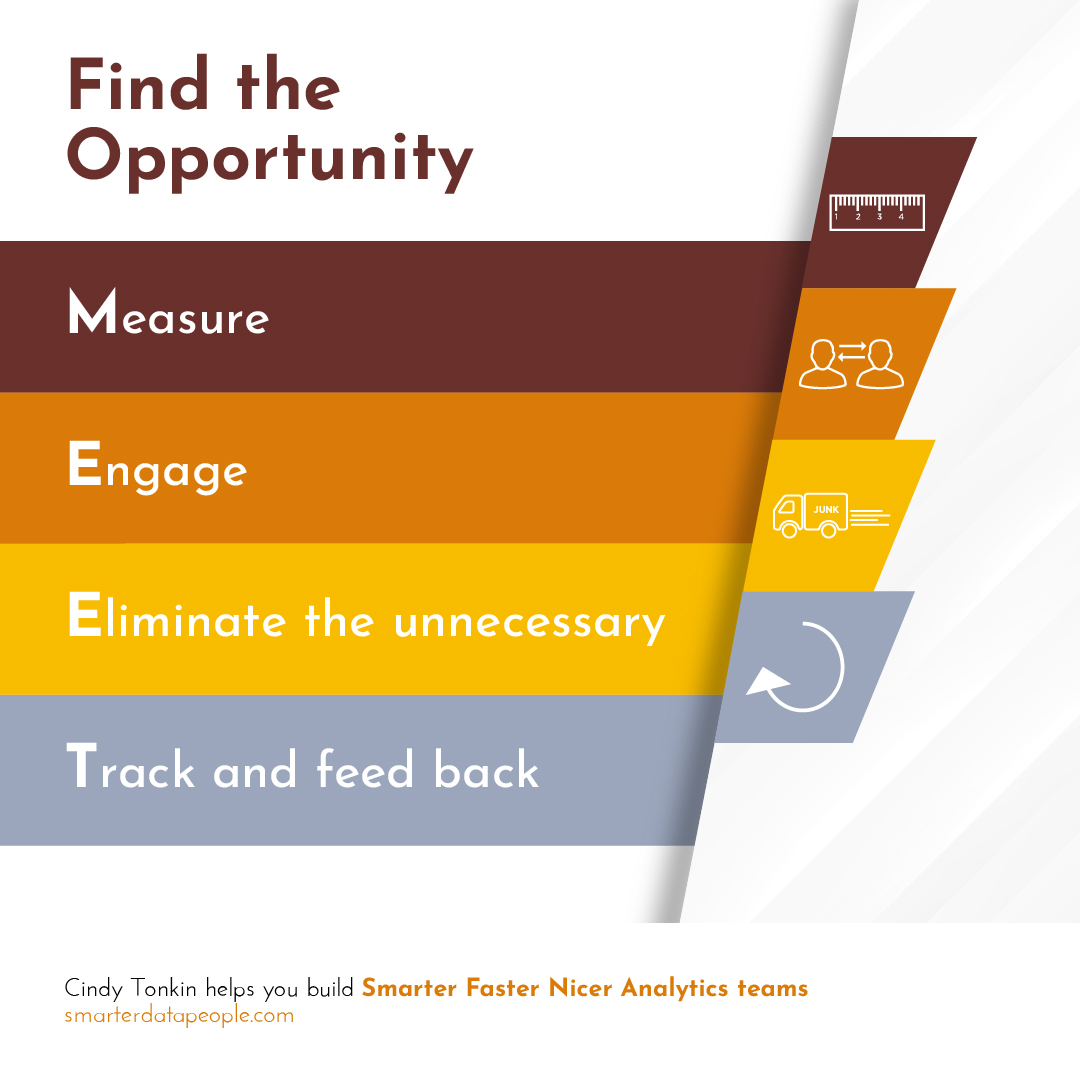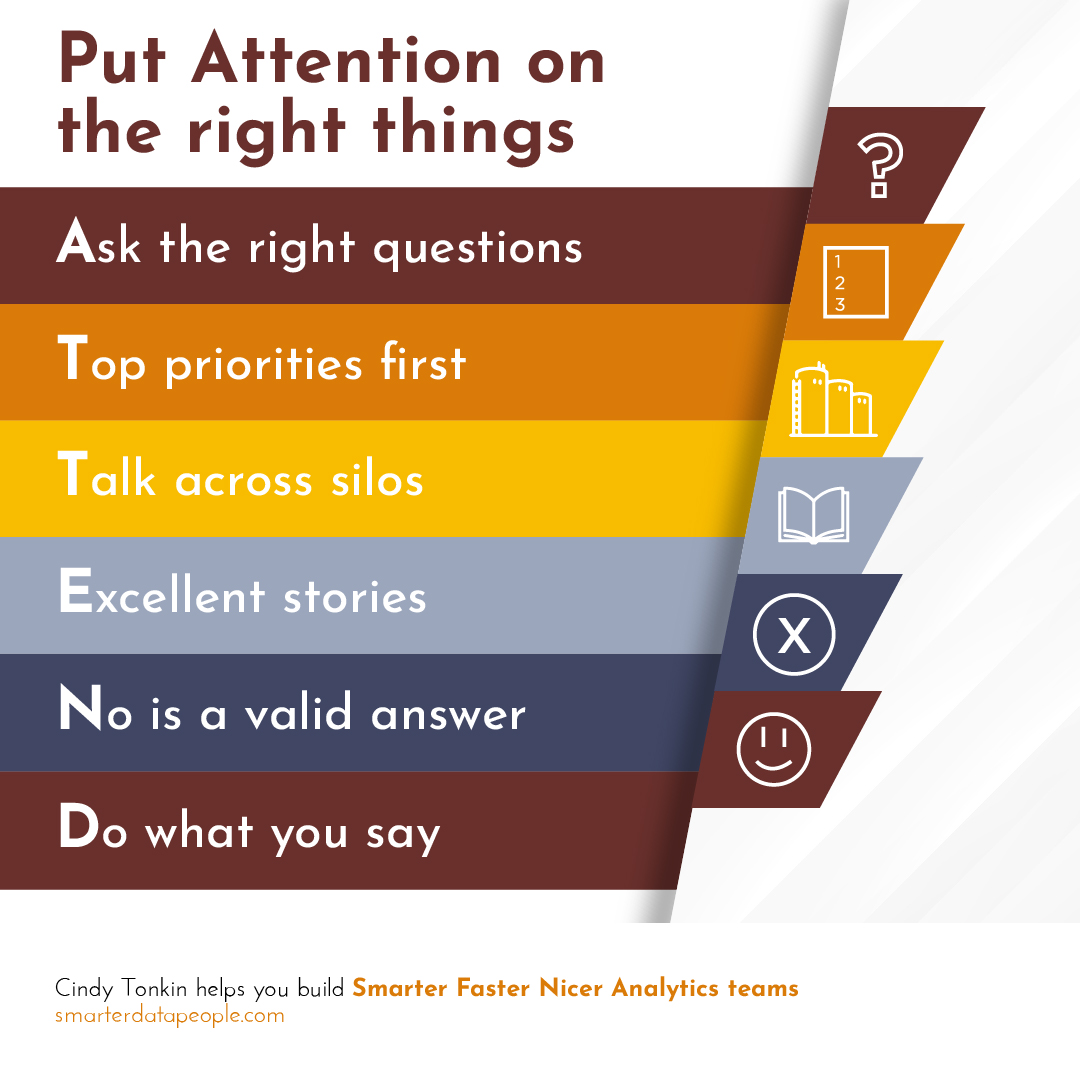Make change happen in your data science teams.
Click here to speak to Cindy Tonkin about how to embed her in your team and get change happening. Get your data science team to work smarter, faster and nicer now
Costs keep going up while the demand to reduce your overheads increases. Your stakeholders are unhappy. And you have teams of technical experts who cost millions and are hard to manage.
Build Analytics Capability is a program to assess your team’s potential, target the opportunity to improve, and then make it happen.

The salary bill for my team is astronomical. They are really hard to manage.
They hoard information and annoy their customers. The work they give me has to be reworked before I can pass it on. My job is harder because they don’t do their jobs. I’m cleaning up their mess all the time.
They’re not bad people, I know they can do better!
The first step is a 10-minute phone call with Cindy Tonkin to see if what she does works for what you need. Click here to find a time that works for your busy diary.
15 months to make it work
Sign up for the full 15 month program and watch your stakeholders celebrate. Talk to me now.

Make sure your teams solve the important technical problems faster with less hassle. And thank the heavens for how great they are.
We can make things work FAST

From a happy client:
Text from my boss today: “great call out for you [at the Leadership team meeting]…[CDO] said you know your shit and did the right things with [complex data project]. Success! Well done us!!”
- Find and measure opportunities to improve. Then put
- Attention on what matters strategically, so we can add in
- Smarter work habits and
- Track and test that what we’re doing makes a difference.


Step 1: Find the opportunity
The first step to building analytics capability is to find the opportunity.
For example meetings: while meetings aren’t the only place that things could be improved they are an excellent place to start. I can assure you that at least 20% of your team’s time in meetings could be spent elsewhere with no ill-effect. It could be closer to 60%. What could you do with an extra 4 hours a week per team member?
The keys to this are MEET.
- Measure
- Engage everyone in the solution
- Eliminate the unnecessary
- Track and feedback

I can tell you more about this when we speak.
Other places where opportunity knocks are duplicated or reworked material, missing skills or training, poor work habits, bad communication and, of course siloed work practices. Then there are the big ones, the really insidious hidden ones like poor communication between consultant and stakeholder, working on the wrong question, an inability to say no (so scope creeps and creeps), and passive-aggressive resistance. I could go on. If you’re seeing any of these, talk to me!
My approach combines observation, measurement, training, coaching and facilitation. It involves things like Meeting Time Management Analysis and Management Operating System reviews as well as individual coaching.
Let’s find out what works well in your team and what could work better.

Step 2: Put their attention on the right things
When your team knows where their attention should be the energy multiplies.
They stop doing the low priority nice to haves. They focus on what matters.
The acronym here is ATTEND:

- Ask stakeholders the right questions
- Top priorities clear
- Talk across functions to collaborate
- Excellent stories to showcase great Insight
- No is a valid answer
- Decent lifestyles, deadlines, and do what you say

Step 3: Get smarter work habits
And how? To do these things your team need skills, systems and the opportunity.

Parkinson’s Law: work expands to fill the time available for its completion

Stock-Sanford corollary: If you wait until the last minute it only takes a minute to do

Hortsmann’s corollary: Work contracts to fit in the time we give it

Hofstadter’s law: It always takes longer than you expect even when you take into account Hofstadter’s law

Definition of insanity: doing the same things we’ve always done and expecting different results
The acronym for this step is SMART
- Strategy is set so we all know where we are and where we’re going, so then we can
- Make meetings work
- Ask the right questions of our stakeholders and set the
- Relationship loops. This means we can
- Tell people no nicely (to manage scope and stay on strategy) and
Smarter work habits is not just about change and improvement, although that is part of it. It’s not just soft skills, although that’s important too. It’s making sure that we’re on track, doing the right things and having robust discussions with our stakeholders. So they respect us, we respect them, and we together make a difference.
The answer isn’t simple. It’s a 15 month process, including some exec team strategy session, 1:1 and small group coaching, a lot of observation and measurement, and lot of pragmatic expertise and theory in how people work.

Step 4: Track and Test
We know well that opinions don’t count. Data does.
Smarter, faster and nicer data science consultants track changes as they happen. And they DASH. They make sure they keep a:
- Dashboard of work
- Aligned across the teams, with
- Strategic feedback loops where everyone is
- Held accountable
If each member your team spends 4 hours per week per person in meetings that’s 200 hours per year per person. 20% of that is 52 hours a year you could spend on better, more interesting projects, thinking more deeply or getting a better work-life balance.
Most consultants spend much more than 4 hours per day in meetings. use my smart meeting bingo tool to find out the potential available to you and your team. Most consultants can give you at least 3 examples of times when stakeholders requested something they didn’t need or something that wasn’t right, or asked for something outside of scope.
Some of the DASH things you’ll already be doing. Some of them you could do with more gusto, more commitment or even with more cut-through to the teams. Getting smarter, faster and nicer is about changing what doesn’t work and adapting to new ways of working.
Three Reasons To Choose Me
That’s me, Cindy Tonkin in the photo. (You probably already know me if you’re here. But just in case!)
There are three key reasons to choose me for this assignment:
- Specialist in data analytics in banking and telcos
- More than 20 years consulting and change management experience
- Intense focus on soft skills to build analytics capability in your team, not just a band aid.

There are a host of other reasons to choose this comprehensive program which combines process improvement, soft skills and strategic planning: here are some. If you’d like to know more about my approach you can listen to my podcast with data science leaders at smarterdatapeople.com
Unleash the Smarts!
So get Smarter Data People. Make a time to talk to me now.

Are you leaving 20% (or more) of the millions you spend on staff on the table?
Get Smarter Data People
Here’s what clients say about my work

More than 9 months after the course ended, my team members were reaching for the course learnings to help work out how to best handle the situation” GB, General Manager, Data Analytics, Major Bank

I can’t believe the changes coming out of a 90 minute meeting. I think it has had more impact than the sum of all meetings I have had in my professional life. DM, Senior Data Analyst, Research and Analytics department of a major bank

The usual weekly customer call lasted 40 minutes rather than the usual 2 hours. I had 110% control, politely told them how things are going to work from now on. They lapped it up and [the customer] is now my best friend! AC, Entrepreneur who used to have stakeholder problems
Helps build analytics capability data science teams work smarter, faster and nicer. soft skills, strategic adjustment, tangled coaching and training.
You Look Better And Your Team Is Happier
Read more from my clients here
Speak to me now about your team


